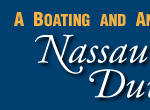CONTACT US:
Florida Fish and Wildlife
Conservation Commission
Fish and Wildlife
Research Institute
100 Eighth Avenue SE
St. Petersburg, Florida 33701
727-896-8626
|
|
|
St. Johns/Flagler County
UF/IFAS Extension
Florida Sea Grant
150 Sawgrass Road
Bunnell, Florida
32110
386-437-7464
|
|
|


|
|
This project was funded in part by a grant awarded by the and .
|
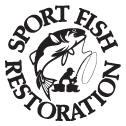
|
|
Additional funding for this project was obtained through the .
|
|
|

|
The coastal waters of Nassau and Duval Counties are a rich mosaic of fish and wildlife habitats that form life-sustaining links in an ecosystem as biologically productive as some of the world’s most celebrated rain forests. From river grasses to coastal marshes, from the St. Johns River to the Atlantic Ocean, each interdependent habitat plays a vital role in this “estuarine machine.”
Marshes and aquatic grasses contribute significantly to a dynamic food chain that draws nutrients from the estuary floor. As aquatic grasses and saltmarsh leaves decay, they provide food for small creatures that are ultimately consumed by fish and larger predators in an endless circle of life.
|
MARSHES and MUD FLATS
Marshes provide food and cover for a vast array of small fish and wildlife. These marshes, which periodically become submerged, nourish and protect many fish and birds. Marsh areas also buffer upland areas from storms and help filter pollutants from water that runs off the land.
Mud flats may be completely exposed at low tide. Although these flats are barren of vegetation, they are teeming with life. Small crabs, clams, and worms, which burrow in the mud, supply a feast for birds wading at low tide.
|
|
More information about salt marshes can be found in the brochure "Florida's Salt Marshes" (PDF, 328 KB).
|
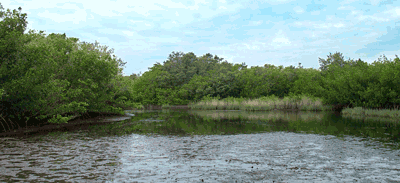
|
|
AQUATIC GRASSES
Aquatic grasses are flowering underwater plants found at shallow depths in the St. Johns River. As a nursery environment, aquatic grasses support small fish, shrimp and crabs that hide among the blades and feast on decaying leaves. Aquatic grasses also help stabilize shifting sands on the bottom of the bay and improve water clarity by trapping fine sediments and particles.
For more information about aquatic grasses in the St. Johns River, visit the St. Johns River Water Management District
|
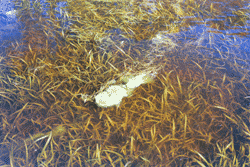
SJRWMD
|
|
OYSTER BARS
Oysters are immobile shellfish that filter water as they feed. Their gray-white shells are irregular in shape. Live oysters and dead oyster shells form in mounds on the creek and river floors, creating bars or reefs. Most prevalent near areas that receive a steady diet of fresh water, oyster bars attract sheepshead, spotted sea trout and red drum, making them popular fishing spots.
|
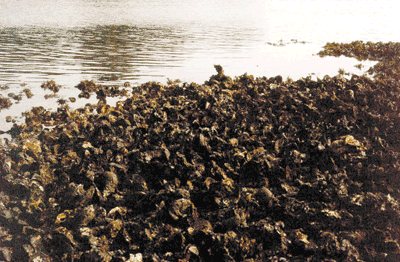
|
Exercise caution in these areas. Oyster bars may severely damage boat hulls and are treacherous for those on foot.
|
If you have any questions, comments, or suggestions about this Web site, please e-mail us at Boating_Guides@MyFWC.com.
Would you like to receive notices of changes to this Web site and the Boating and Angling Guide to Nassau and Duval Counties? If so, please e-mail us and include SUBSCRIBE-DUVAL in the subject line.
|
|
